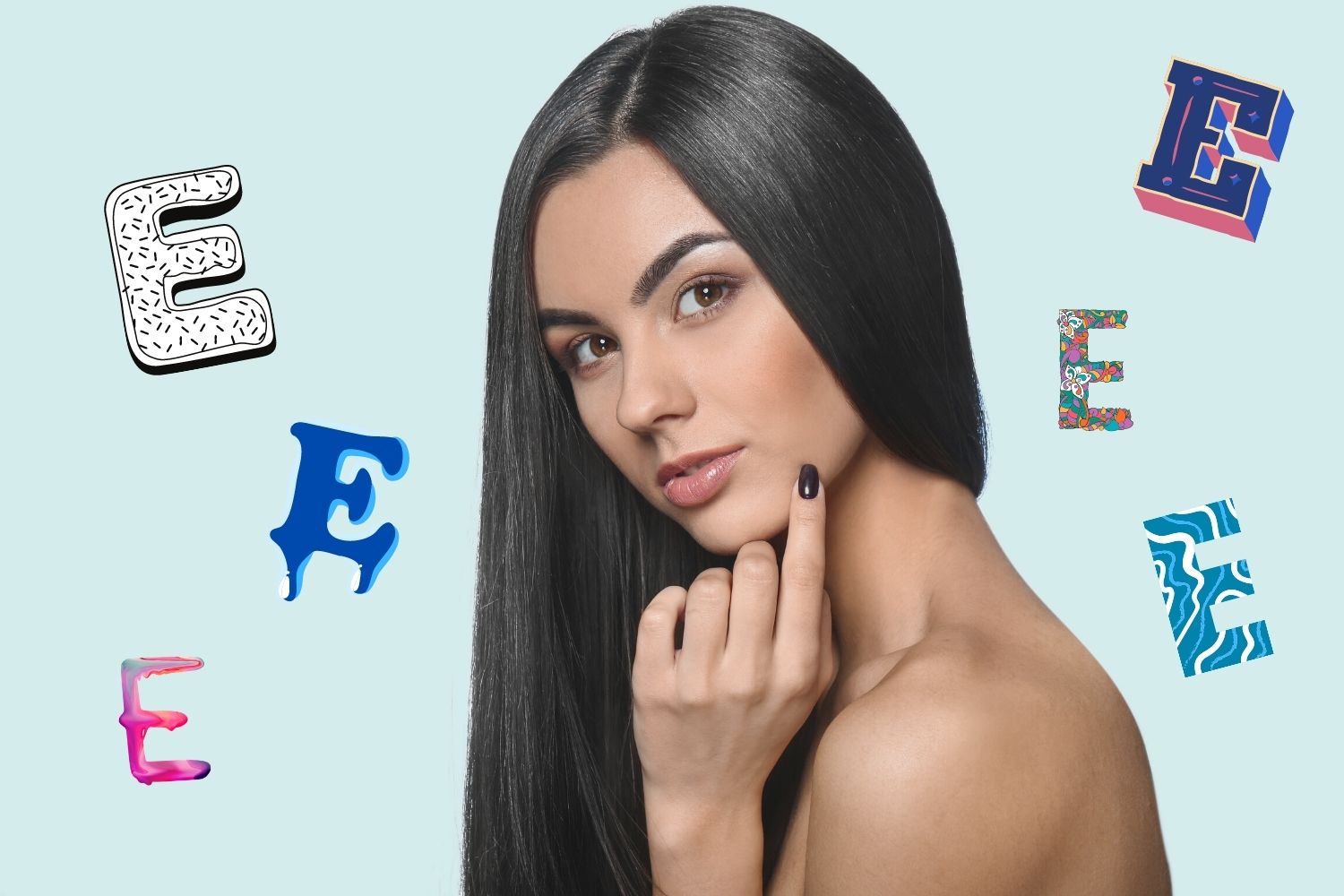You may have heard of vitamin E for skin care products but what about hair care? Vitamin E in skin care products can often help protect your skin from free radical damage and environmental stressors. This nourishing ingredient can also have the same effects on your hair. Vitamin E contains rich antioxidant properties that can work revive damaged, dull strands and reveal stronger, shinier hair. The following are five ways vitamin E can work to promote a healthier scalp and head of hair.
1. Improves scalp circulation. Several studies have shown that vitamin E can increase blood supply to the scalp thus, encouraging hair growth. Better blood circulation in your scalp can ensure that your scalp is receiving all the essential nutrients and oxygen needed to support it. Blood flow in the scalp also helps in the anagen phase of the hair, causing it to grow longer and combat hair thinning. A 2001 study found a link between increased blood supply and increased hair follicle size and hair growth in mice.
2. Combats hair thinning and shedding. Due to the antioxidant properties found in vitamin E, the ingredient works to reduce oxidative stress in the scalp which is linked to increased hair thinning. Protecting your scalp and hair from oxidative stress is vital because free radicals can cause your hair follicles to break down which leads to damage and shedding. Vitamin E may be just what you need to strengthen your strands, a trial in 2010 found that vitamin E supplements were linked to fuller hair and less shedding.
3. Increases hair’s shine. Who doesn’t want shiny, vibrant, healthy-looking strands? One of the most straight-forward benefits of vitamin E is the boost of shine it instantly provides. This means vitamin E can also combat frizz and dry strands through helping your scalp and hair retain moisture. Hair becomes frizzy and dull when the protective layer of the hair’s cuticle is removed, vitamin E protects this layer and restores the shine.
4. Balances oil production. Excess oil production can often lead to greasy, dirty-looking hair. When your scalp is producing this excess oil, it may be because it lacks proper moisture and hydration. A 2004 study looked at the importance of vitamin E in creating a protective barrier on the skin’s surface and found that it helps to lock in hydration. Because vitamin E creates a protective barrier on the scalp, it can effectively condition and moisturize thee scalp to promote healthier oil production without leaving a greasy, wet appearance.
5. Encourages scalp health. Aside from increasing scalp circulation, vitamin E can also work to promote an overall healthier scalp through its protective properties. Scalp health is the starting link to healthier hair. A 2015 study linked a dry, flakey, irritated scalp to dull, damaged, thinning strands, which is why scalp health should not be overlooked. Vitamin E works to condition the scalp and deeply moisturize to combat any irritants. It also works to give your hair a strong base through reducing oxidative stress and protecting the lipid layer that is vital in strong, healthy strands.
How can you use vitamin E for your hair?
You can incorporate vitamin E orally through supplements and diet. However, if you want a more straight forward and full-proof method, applying vitamin E to your hair topically will do the trick. When you apply a hair care product that contains vitamin E, your hair has a better chance of absorbing its nutrients and demonstrating its effects. Hair oils are the most common products to get vitamin E into your hair. Fyab Health’s line of Hair Vitality Oils are formulated with vitamin A and E as well as Jojoba Seed, Argan and Moringa Oil to deeply nourish, hydrate and strengthen your strands. Not to mention, the Fyab Hair Oils come in 4 different refreshing scents. You can also incorporate vitamin E to your hair care routine through Fyab Health’s Hair Vitality Shampoo and Conditioner to help balance oil production while also protecting and strengthening your strands.
SOURCES:
Beoy, L. A., Woei, W. J., & Hay, Y. K. (2010). Effects of tocotrienol supplementation on hair growth in human volunteers. Tropical life sciences research, 21(2), 91–99. — READ NOW
Guo, E. L., & Katta, R. (2017). Diet and hair loss: effects of nutrient deficiency and supplement use. Dermatology practical & conceptual, 7(1), 1–10. https://doi.org/10.5826/dpc.0701a01–READ NOW
Koyama, T., Kobayashi, K., Hama, T., Murakami, K., & Ogawa, R. (2016). Standardized Scalp Massage Results in Increased Hair Thickness by Inducing Stretching Forces to Dermal Papilla Cells in the Subcutaneous Tissue. Eplasty, 16, e8. — READ NOW
Schwartz, J. R., Henry, J. P., Kerr, K. M., Mizoguchi, H., & Li, L. (2015). The role of oxidative damage in poor scalp health: ramifications to causality and associated hair growth. International journal of cosmetic science, 37 Suppl 2, 9–15. https://doi.org/10.1111/ics.12289 —READ NOW
Yano, K., Brown, L. F., & Detmar, M. (2001). Control of hair growth and follicle size by VEGF-mediated angiogenesis. The Journal of clinical investigation, 107(4), 409–417. https://doi.org/10.1172/JCI11317 —READ NOW


No responses yet